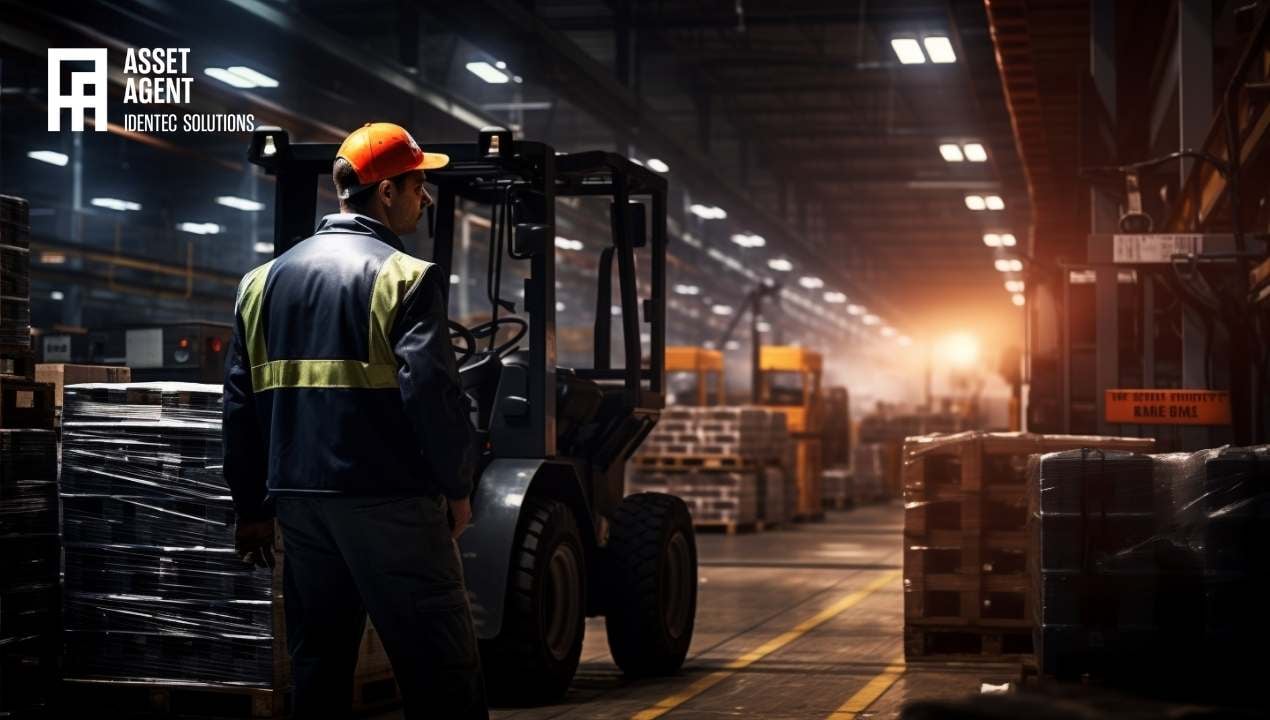Digital Transformation Tools: IIoT, RTLS and AIS
| Written by Mark Buzinkay

No video selected
Select a video type in the sidebar.
Industrial Revolution in the 21st century
The Industrial Revolution ushered in significant enhancements in manufacturing and service systems. Due to notable and swift transformations in manufacturing and information technology, a synergy emerged from the fusion of advancements in information technology, services, and manufacturing. These progressions increased productivity in both service systems and the manufacturing landscape. In recent times, manufacturing entities and service systems have confronted considerable challenges stemming from the need to coordinate and integrate groundbreaking concepts like communication and networking (Industrial Internet), embedded systems (Cyber-Physical Systems), adaptive robotics, cybersecurity, data analytics, artificial intelligence, and additive manufacturing. These progressions extended manufacturing and information technology innovations, culminating in the term "Industry 4.0." This term, first introduced by the German government, signifies a new phase of the industrial revolution.
As manufacturers grapple with overarching trends (e.g., globalisation, rising customer demands and disruptions in global supply chains), they are compelled to adapt, pushing manufacturers to reduce their expenses, manufacture products on-demand, offer highly efficient delivery services, and adopt systems that provide greater agility and fast response. Thus, digital transformation emerges as the inevitable path.
With the Digital Transformation revolutionising sectors, experts anticipate over 75 billion linked IIoT devices by 2025. The "Internet of Things" (IIoT) denotes a network of intelligent devices that connect online and amongst themselves to exchange data and insights. The surge of IIoT devices has revolutionised businesses, offering vast real-time data and empowering managers to make informed, data-centric choices that enhance overall performance.
IIoT and RTLS
While IIoT devices offer insights into the operations of various machinery or business assets, they often lack location data. Incorporating real-time location systems (RTLS) complements IIoT by pinpointing the location of each asset as it gathers data. This integration is pertinent across industries, especially as the concepts of smart homes and cities gain traction. The combination of RTLS and IIoT is especially relevant for sectors like manufacturing, shipping, and retail, where tracking numerous components, including costly machinery and stock, is essential.
Real-time location systems (RTLS) primarily determine the location of a target, ranging from a person to a package. These systems comprise wireless nodes, often tags or badges, that transmit signals to connected gadgets, offering precise real-time data on operations.
The convergence of RTLS and IIoT has birthed a novel ecosystem offering numerous benefits to healthcare establishments, businesses, and more. These benefits encompass system and asset inclusion and automation, workflow optimisation, safety improvement, and the acquisition of unbiased and precise data.
Moreover, many portable devices already possess the components necessary for location tracking. With a software enhancement, these gadgets can be retrofitted to harness the capabilities of IIoT-powered RTLS seamlessly and cost-effectively. This is evident in using a visitor's smartphone during a museum visit, the rising trend of barcode scanners for streamlined grocery shopping, and industrial barcode scanners employed by logistics personnel.
Another advantage is optimising management processes within the manufacturing and logistics sectors. For instance, by merging the two technologies, a supervisor can continuously gather and log data from readers and tags dispersed throughout the site.
The potential also extends to labour management significant spending for most companies. Managers can now oversee workflows, overtime, capacity, and more. Integrating RTLS with IIoT in these sectors translates to real-time insights, heightened job site safety, and cost reductions through refined workflows and management.
IIoT and RTLS collaboration can also enhance return on investment and operational efficiency. In a vast manufacturing facility, IIoT sensors attached to machinery provide in-depth visibility into its functionality. Managers can receive instant notifications about maintenance needs or potential slowdowns, allowing for prompt interventions before minor issues escalate.
As demonstrated, the fusion of IIoT and RTLS holds the promise of revolutionising efficiency, productivity, and safety across various industries. The capability to accurately track and locate both assets and individuals facilitates process optimisation, enabling employees to concentrate on value-added activities, leading to organisational efficiency and cost savings. Companies are now integrating these dual innovations into their routine operations, making workplaces more secure, smart, and profitable than ever.
What are the Challenges in IIoT and RTLS Integration?
Despite the myriad advantages of integrating IIoT and RTLS, the journey isn't devoid of obstacles. Businesses must navigate obstacles such as:
Scalability
Each IIoT and RTLS solution often comes with unique infrastructure prerequisites. Scaling these solutions can become expensive, especially if continuous infrastructure investments are required.
Furthermore, as the solution's scale grows, other challenges, including data security and integration, become more pronounced.
Integration Complexity
Many businesses utilise diverse systems for varied purposes. Integrating IIoT and RTLS devices with these existing systems is crucial to maximise benefits. However, this can be technically challenging, especially when interfacing with older legacy systems.
Solutions like APIs (application programming and interface) and Middleware can alleviate integration challenges. These tools facilitate data transfer between applications, ensuring different components can interact regardless of their coding.
Interoperability
Interoperability pertains to the capability of diverse systems to connect and exchange data. Given that both IIoT and RTLS devices might be developed on different platforms, seamless communication isn't guaranteed.
McKinsey notes that the IIoT realm is "characterised by fragmented, proprietary, vendor-specific ecosystems." If devices can't exchange data, the company's potential benefits are reduced. The remedy to interoperability lies in a universal framework and standardised communication protocols. Until such standardisation is widespread, businesses must exercise caution in selecting solutions to ensure compatibility.
Data Security and Privacy
Every new device connected to the Internet presents a potential entry point for hackers. This risk is particularly high for companies unfamiliar with extensive technology use. Alongside cybersecurity threats, there's the risk associated with data privacy breaches, potentially exposing sensitive customer or employee information.
Read more about digital transformation challenges here...
What is the Automatic Identification System (AIS)?
A primary technology in IIoT is automatic identification (AIS) technology, which can be employed to create intelligent objects. The IIoT is currently seen as a broader amalgamation of advanced technologies, including pervasive wireless standards, data interpretation, and machine intelligence. This means that a vast array of conventional sectors will be influenced by IIoT technology, as it integrates into every facet of our daily existence.
RFID technology offers a prime illustration. RFID has been utilised for recognising various items in storage facilities, manufacturing floors, logistics firms, distribution hubs, retail outlets, and waste/recycling phases. Once identified, these items possess intelligent sensing capabilities, enabling them to communicate and engage with one another through distinct modes of connectivity, potentially generating a vast volume of data from their movements or sensing patterns. The connectivity among intelligent items is pre-established; these items are assigned specific tasks or algorithms, like production processes, which they adhere to once outfitted with RFID detectors and labels. RFID systems assist end-users in executing their daily tasks and gathering data pertinent to these activities, ensuring real-time production oversight. Radio-frequency identification (RFID) stands as the most prevalent automatic recognition system presently in operation.
A good example of an Automatic Identification System in manufacturing is Asset Agent, an industry 4.0 solution. The Automatic Identification Module is used at production machines to identify the asset being inserted, as well as its material type and expiration date. This information is then validated according to the FEFO (First Expire, First Out) strategy, ensuring that the process remains compliant at all times.
All necessary data becomes visible once connected to the wireless Asset Agent transponder.
Takeaway
The integration of IIoT and RTLS has ushered in a new era of operational efficiency and data-driven decision-making. By offering increased data visibility, managers can pinpoint not just operational bottlenecks but also the precise location of components, streamlining problem-solving. This enhanced visibility aids in more informed decision-making, especially concerning the strategic placement of components for easy access. The result is a notable improvement in efficiency, ensuring smoother production processes. Furthermore, the role of Automatic Identification, particularly through technologies like RFID, further augments this seamless integration, making objects smarter and more interactive. In essence, the fusion of RTLS, IIoT, and Automatic Identification equips businesses with a significant competitive advantage in today's digital age.
Dive deeper into one of our core topics: Digital Transformation
Glossary
In finished vehicle logistics, a transponder is an electronic device affixed to a vehicle to enable automatic identification and tracking throughout the supply chain. It communicates with RFID or GPS systems, providing real-time data on vehicle location, movement, and status. This enhances visibility, inventory management, and process efficiency from factory to dealer. Transponders reduce manual scanning and help prevent loss or misrouting of vehicles. (2)
Sources:
(1) Andreas Behrendt, Enno de Boer, Tarek Kasah, Bodo Koerber, Niko Mohr, and Gérard Richter (2021): Leveraging Industrial IoT and advanced technologies for digital transformation; https://info.sightmachine.com/hubfs/Downloadable%20Resources/Downloads/leveraging-industrial-iot-and-advanced-technologies-for-digital-transformation.pdf
(2) Gonzalez-Feliu, J., Semet, F., & Routhier, J.-L. (2014). Sustainable Urban Logistics: Concepts, Methods and Information Systems. Springer.
Note: This article was updated on the 21st of March 2025

Author
Mark Buzinkay, Head of Marketing
Mark Buzinkay holds a PhD in Virtual Anthropology, a Master in Business Administration (Telecommunications Mgmt), a Master of Science in Information Management and a Master of Arts in History, Sociology and Philosophy. Mark spent most of his professional career developing and creating business ideas - from a marketing, organisational and process point of view. He is fascinated by the digital transformation of industries, especially manufacturing and logistics. Mark writes mainly about Industry 4.0, maritime logistics, process and change management, innovations onshore and offshore, and the digital transformation in general.
Related Articles
Related Product


